A Look at the Underappreciated Seiko 6105-8000
If you’ve been reading #TBT since its inception a few short years ago, and Fratello Watches in general for that matter, you know that we’re fans of Seiko divers. Within our series on vintage watches, we’ve taken a look at a wide array of the Japanese brand’s models meant for the undersea. From 70M Sports Divers, shrouded Tunas, to the legendary 62MAS, we’ve covered many. Today’s piece is just one more piece of the brand’s lineage and it’s a good one. The Seiko 6105-8000 is today’s focus.
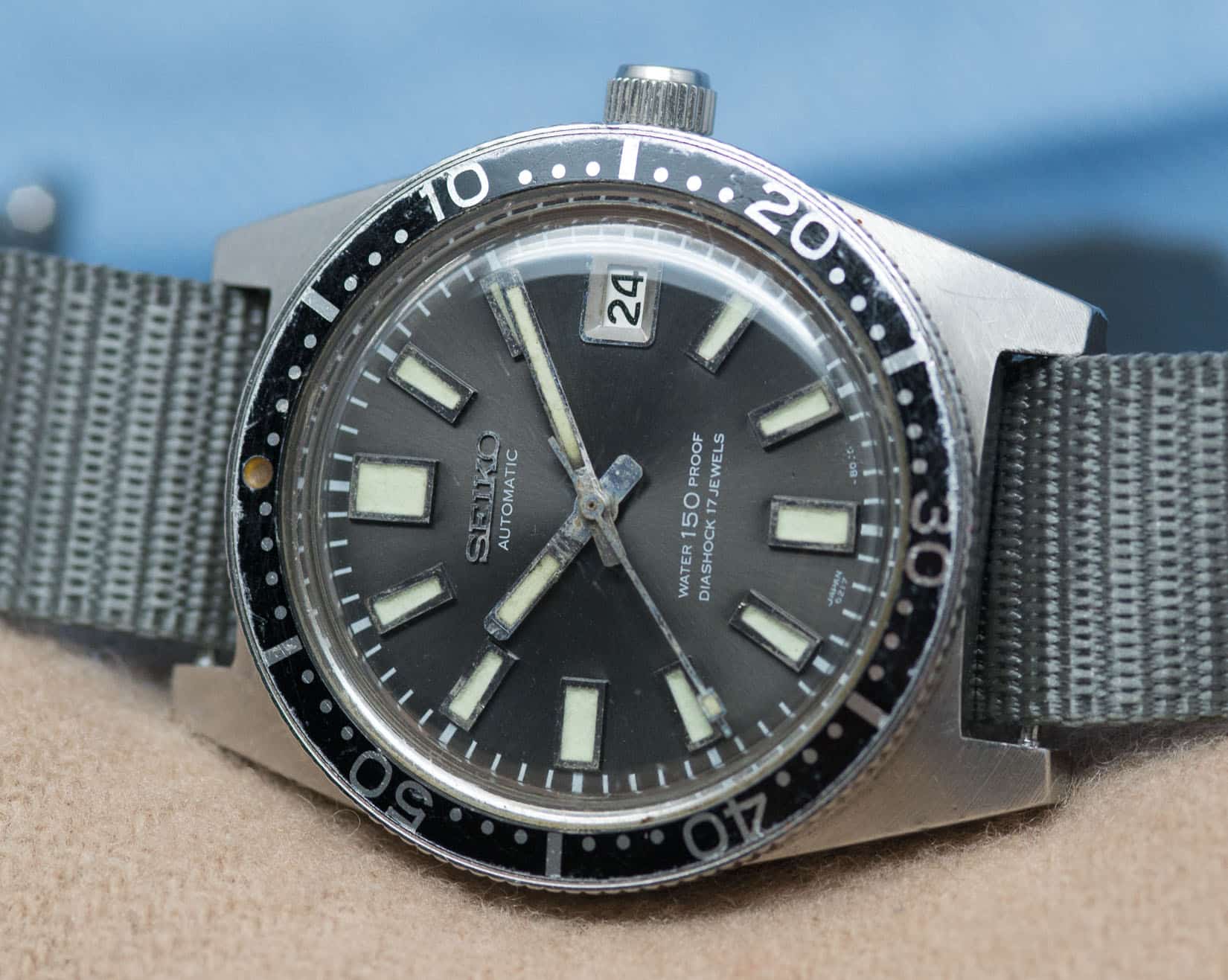
When the Seiko 62MAS was released in 1965, it marked the brand’s entry into the diver’s watches segment. With 150M of water resistance and a rotating external bezel, it was, on paper, a watch that met the needs of those who wished to partake in popular diving activities. By most accounts, though, the 62MAS wasn’t known to be an especially good diver due to leakage. Still, the 62MAS hung around until the 1968 when it was replaced by a couple of watches. On the professional side, Seiko introduced the 6215-7000 in 1967, which was quickly replaced by the very similar 6159-7000 with a hi-beat movement. These expensive watches contained, monobloc cases, screw-down crowns and mineral glass crystals and are highly valued today. In fact, Seiko just released a 6159 reissue to celebrate the model’s 50th anniversary. On the more affordable side, a new 150M diver was released in 1968 to directly replace the 62MAS. This watch was the new Seiko 6105-8000.
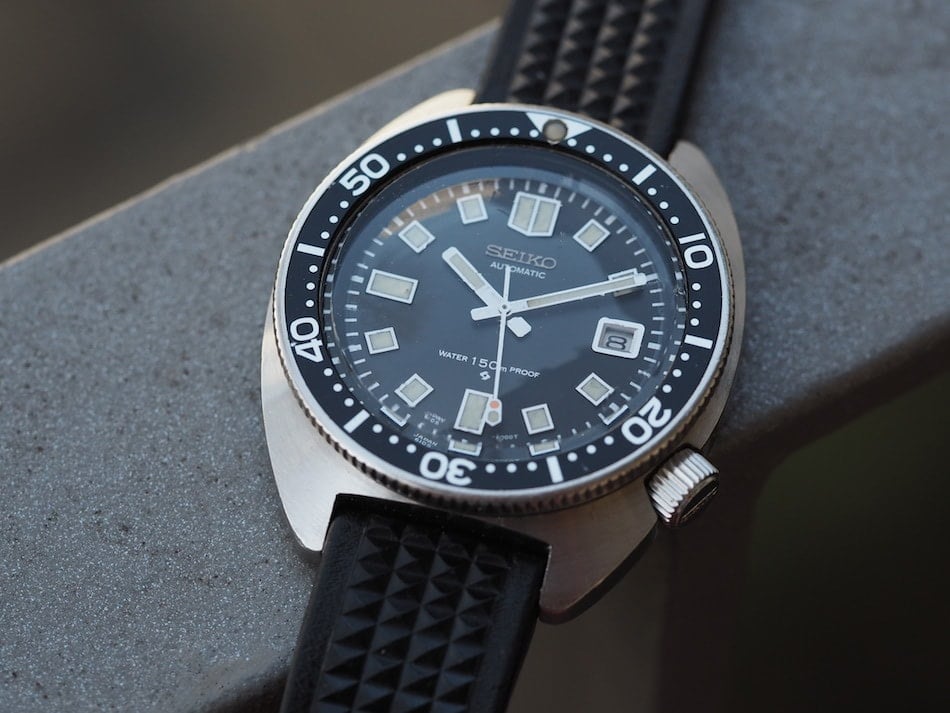
If the 62MAS looked like a relatively conservative piece back in the 60’s, the Seiko 6105-8000 must have come across as a relative shocker. Gone was the Aquastar-style case because the 6105 ushered in the use of a forward thinking c-case. Plus, Seiko returned to its Silver Wave days with the positioning of the crown at 4:00; both the case shape and the crown location are hallmarks of Seiko divers that exist even on the brand’s current models. Interestingly, Seiko referred to this crown in its catalogs, nestled into the side of the case, as “anti-snag”. It was also the first time that Hardlex was employed on a 150M Seiko diver, and described as “mar- resist”, and is another feature that’s still with us today.
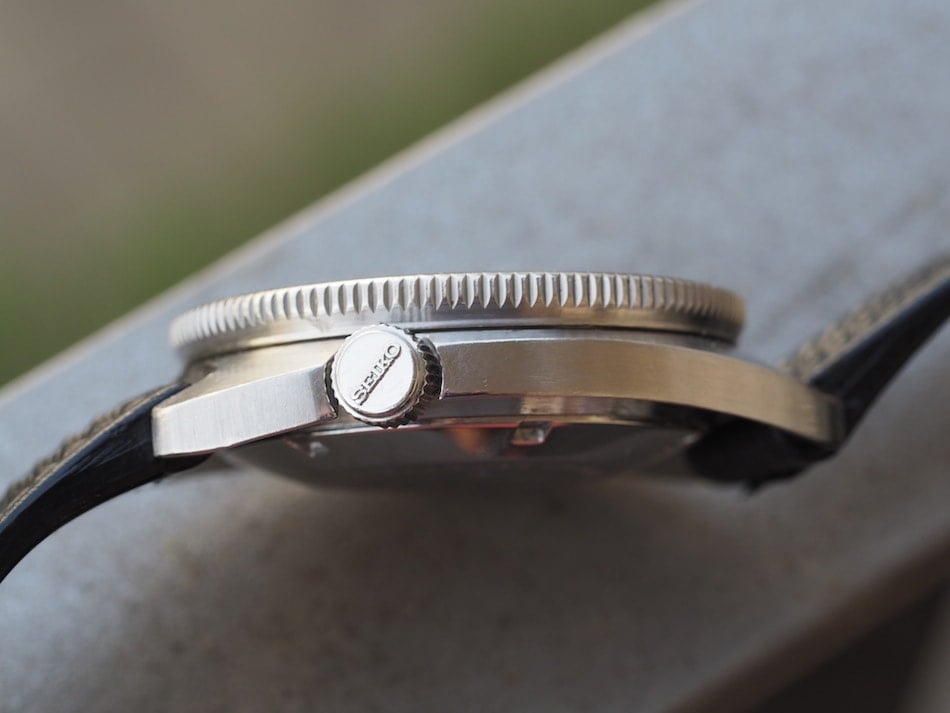
The Seiko 6105-8000 contains a bi-directional 60-minute diver’s bezel with a lume pip at 12:00. It’s a fairly heavy thing to turn despite lacking any clicks, but that makes it far more useful than the relatively lightweight unit on this watch’s predecessor. Coming back to the crown, it’s signed “Seiko” in that lovely font, and is not a screw-down. Oh, and if you like that signature, note that this is the last model to contain it. The screw-down case back is a relatively simple thing and it still lacks the tsunami that wouldn’t make its return until the mid-70’s on the 6309.
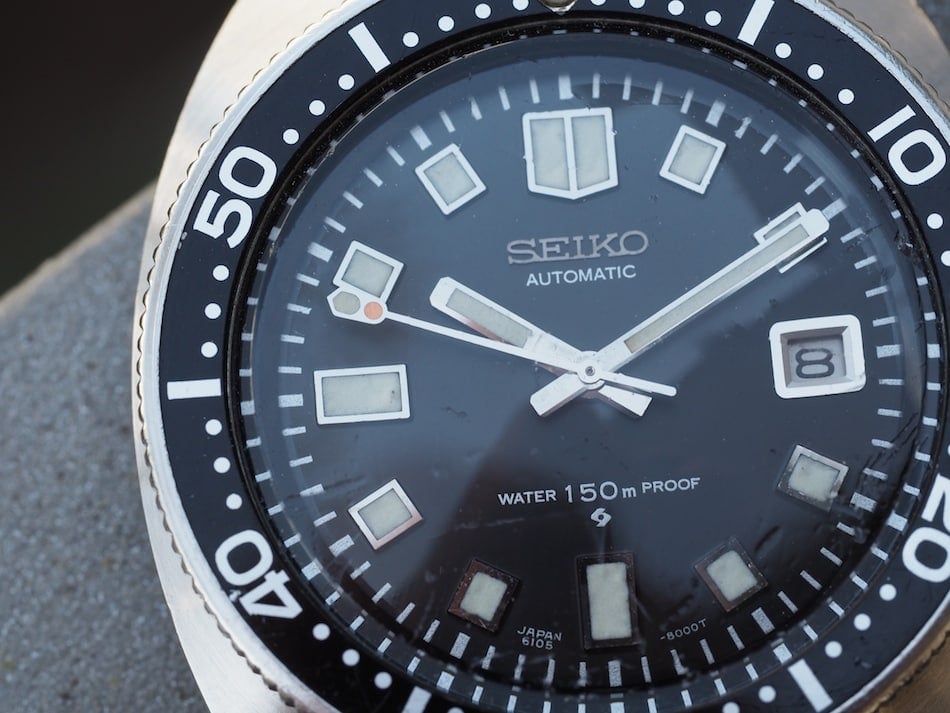
When looking at the dial of the Seiko 6105-8000, if you’re at all familiar with the marque’s design language, this one won’t be a surprise. Everything is highly legible on the black dial and there’s little frivolity at work. The large, lumed hour indices are applied and contain chromed surrounds. The date window is also surrounded and frames what looks to be a silver date wheel with black font. The writing and the minutes track are printed and white, while the Seiko logo is applied in chrome. Our favorite “Suwa” symbol makes its way to the area just above 6:00. The hands are simple chromed rectangles filled with lume and the only “funky” feature is the sweep seconds hand. It’s an interesting “arrowhead” shape with two areas filled with lume, except that the innermost one is filled with red. It’s a really nice little add of color on a very stark dial. Most of these hands have faded to the point that both dots look similar, but this piece still gives us a clue as to what this watch truly looked like 48 years ago!
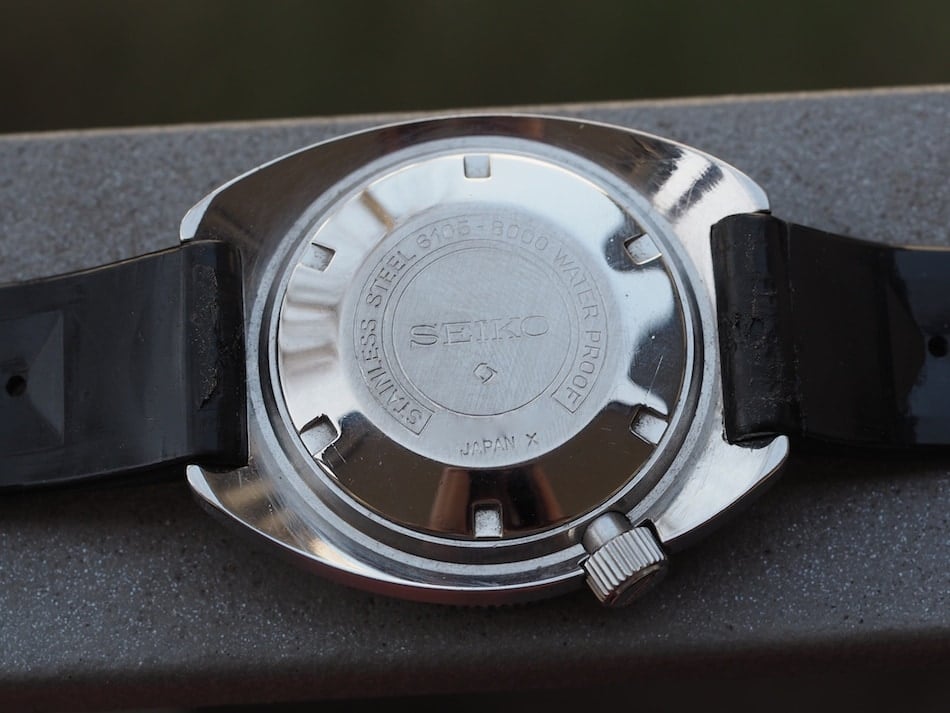
Inside the Seiko 6105-8000, we have the 6105 movement. It’s notable for running at 21,600 bph and containing 17 jewels. Whether it’s in early “A” form or the later “B” version, this movement does not hack (although, there seem to be some who feel that it is possible to see hacking in some very late editions), but they both contain a quickset date. Pulling the crown out one stop and rotating changes the date. As with most Seiko’s the 6105 cannot be handwound, but it does come to life very quickly.
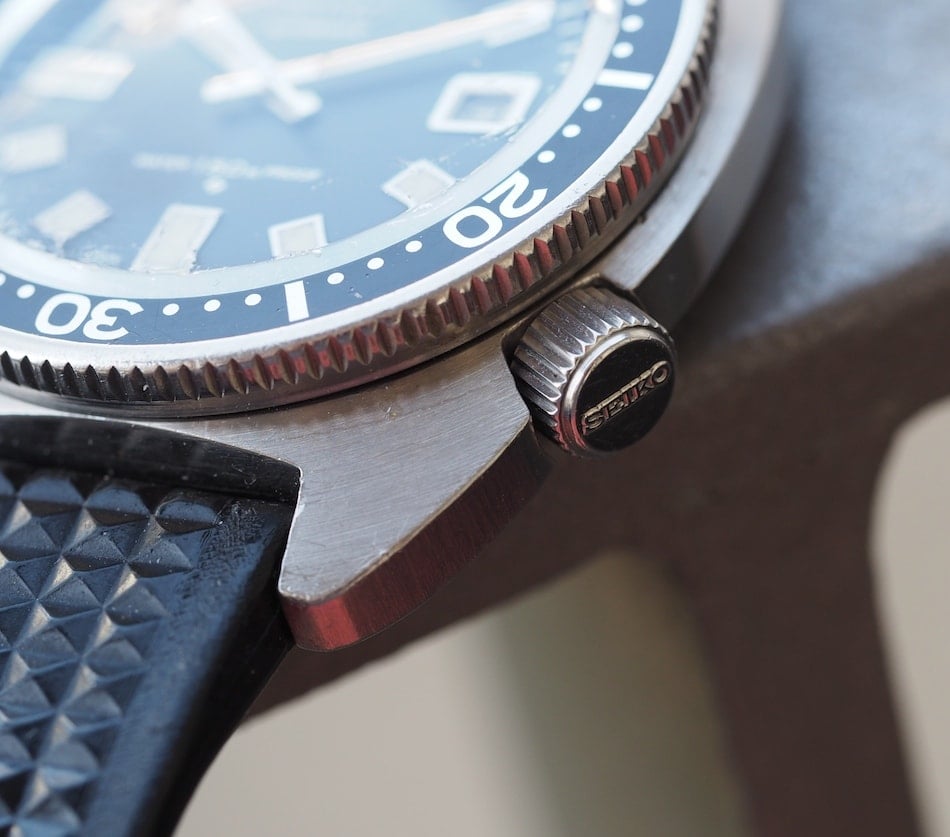
Going close-up with the Seiko 6105-8000 shows us case finishing that’s comprised of radial swirls on the topside and polishing on the sides. The swirled finish up top is nicely done and this piece still retains its sharp and defined edges. Likewise, the dial shows great execution and the markers look good. The only thing inhibiting the view to some degree is a Hardlex crystal with some scratches.
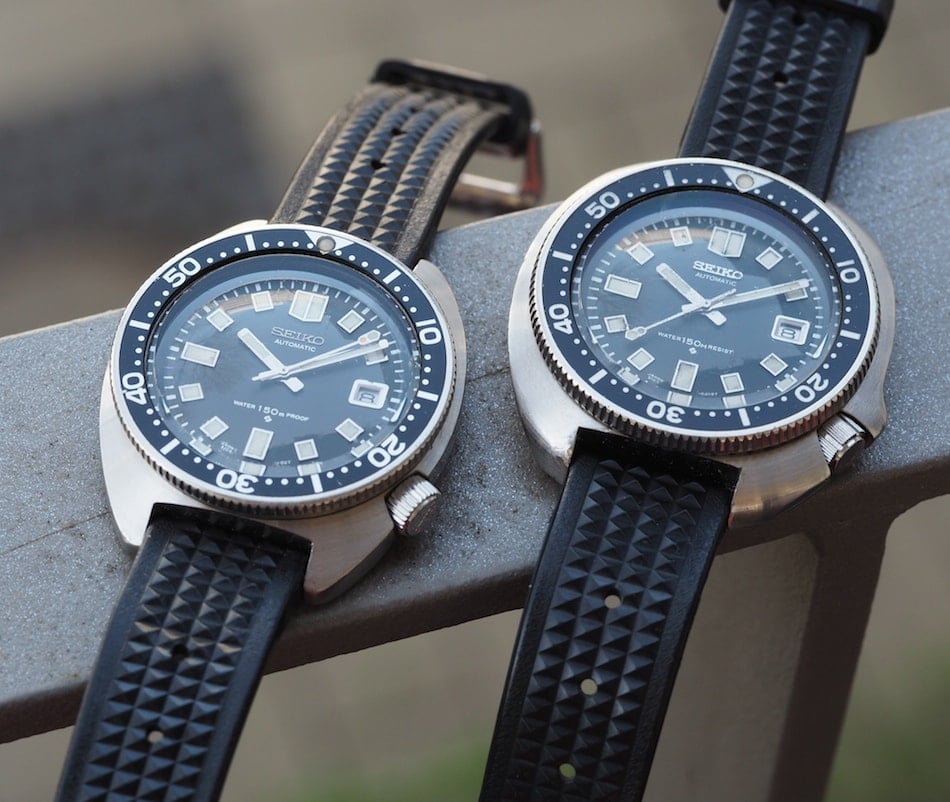
Now, I have to be open here; up until now, I’ve made no mention of the Seiko 6105-8000 successor. The 6105-8110 that followed this piece in later 1970 is, for most collectors, the 6105 to own and many think it is the vintage Seiko diver to own. In fact, I’d bet that a fair number who own it don’t even know about the 8000 that we’re discussing today. I wrote about one that I purchased some 6 years ago and I must confess that the later 8110 is a far more interesting watch at first glance. Its amoebic shape and huge size makes it highly unique and an appearance in Apocalypse Now, earning it the nickname of “Captain Willard”, has probably made the later piece more memorable as well. But, if forced to choose between the two, I’m a lot closer to calling it a horse race than ever before. Why is that?
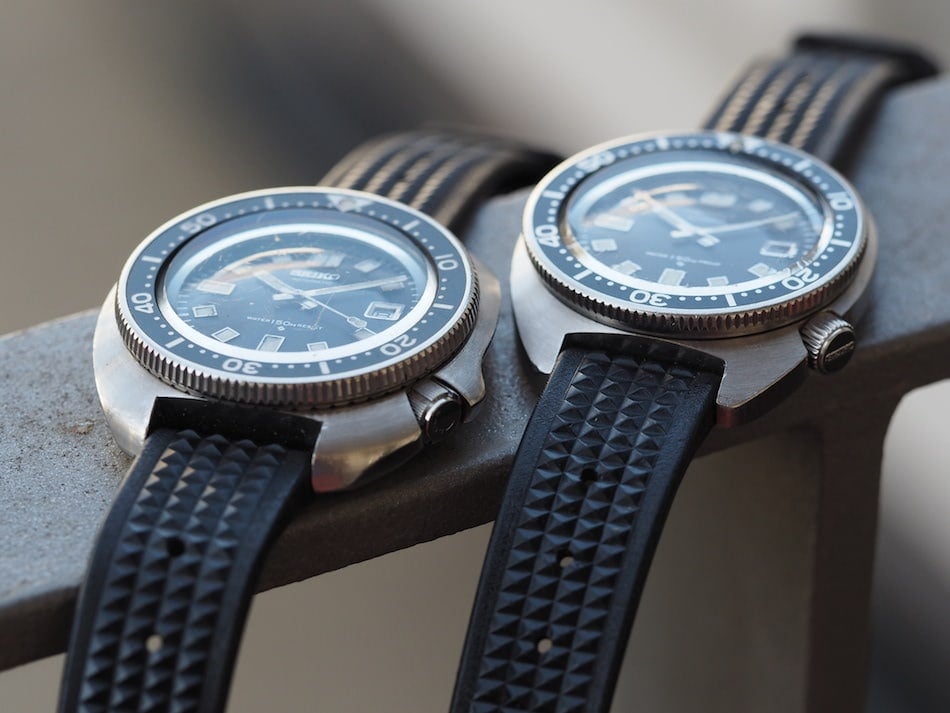
I enjoy the Seiko 6105-8000 because it’s the simpler choice when compared to its successor. Plus, it just wears more comfortably for me. Whereas the 8110 can feel like a bit of a slab, the 8000 is far more lithe.
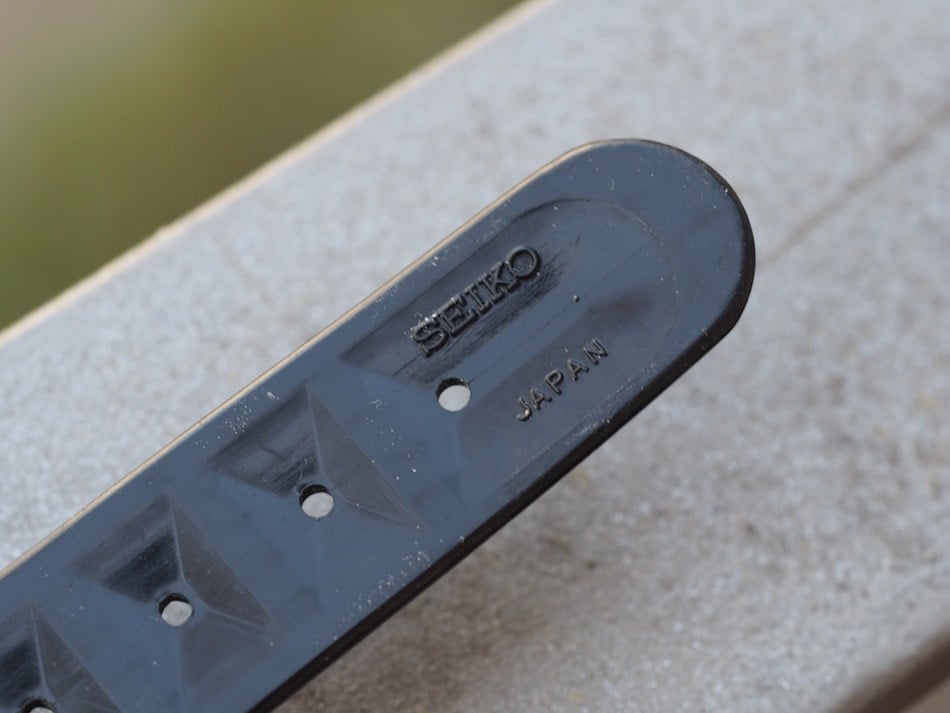
It fits under a sleeve nicely and that’s even while fitted on its original 19mm waffle strap. At 41mm in diameter compared to the 44mm of the 8110, the difference is dramatic despite the same thickness of 12.5mm and lug to lug of 48mm.
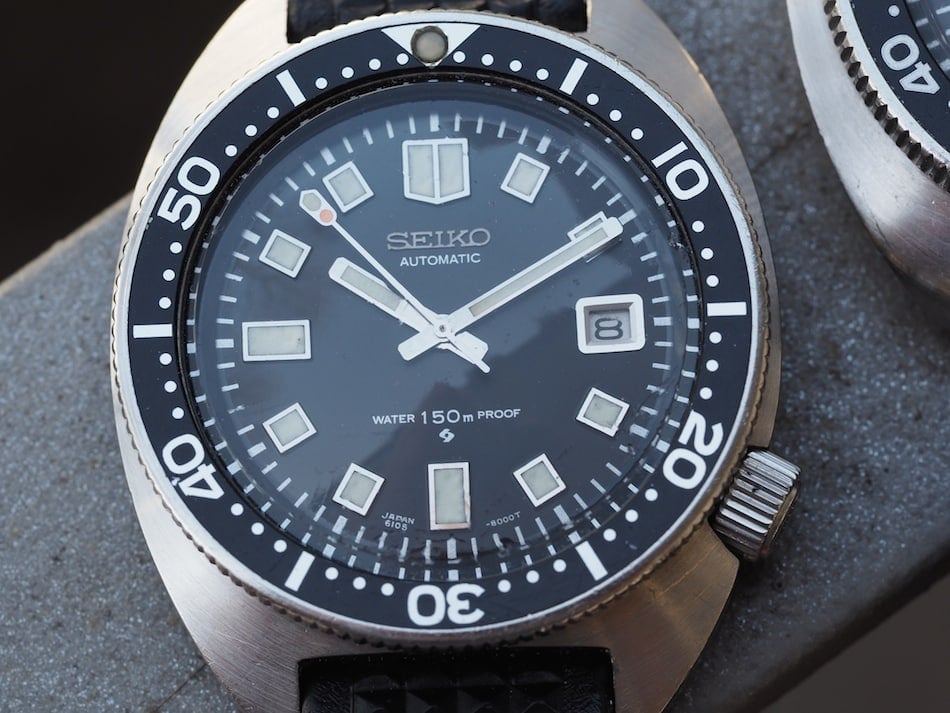
Plus, the Seiko 6105-8000 isn’t an easy find. Head to your favorite auction site and have a look-see. See? The 8110/9 outnumbers 8000/9’s (the “9” versions were for international markets, by the way) by far. And then, trying to find a good one ups the ante further. As an older watch, I suppose that doesn’t help when thinking about the attrition rate and more importantly, the 8000/9 was made for fewer years than its successor. Case in point, I bought my first 6105-8000 about 5 years ago and it’s purely a cobbled together watch. Everything in it is real, but there’s little aside from the bezel, case and crown that are from an 8000/9.
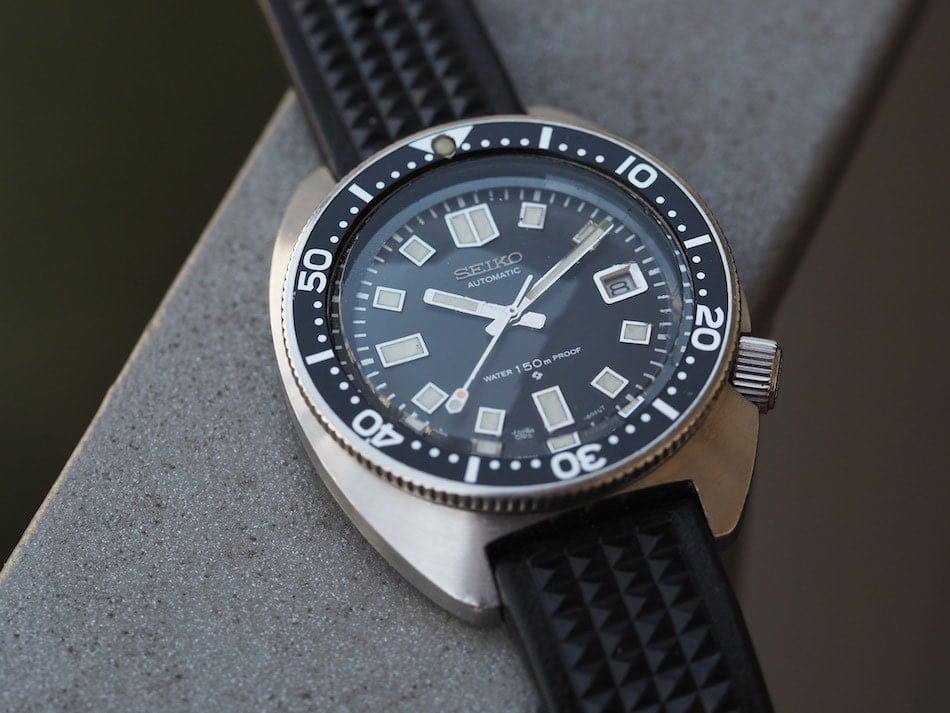
I found this Seiko 6105-8000 recently in Japan and I ended up going many rounds, thereby extending the auction by nearly an hour, against a couple bidders that were likely dealers. I ended paying a lot for this watch in Seiko terms and that means roughly $1,500. Yes, sadly, the days are gone when a good Seiko 6105, of any variant, could be found for $600-800, but then take a look at the condition of this watch. The piece is from 1970 (I’ve obscured the serial number) and is really in beautiful condition. The lume displays some very light aging at the edges, but everything is crisp overall and the overall case condition is sharp and the original matte finish has been retained. The Hardlex mineral crystal displays some typical scratches, but it’s far from needing to be replaced. Even the sweep hand retains its red pigment dot. Yes, the watch was expensive, but it’s a lovely specimen.
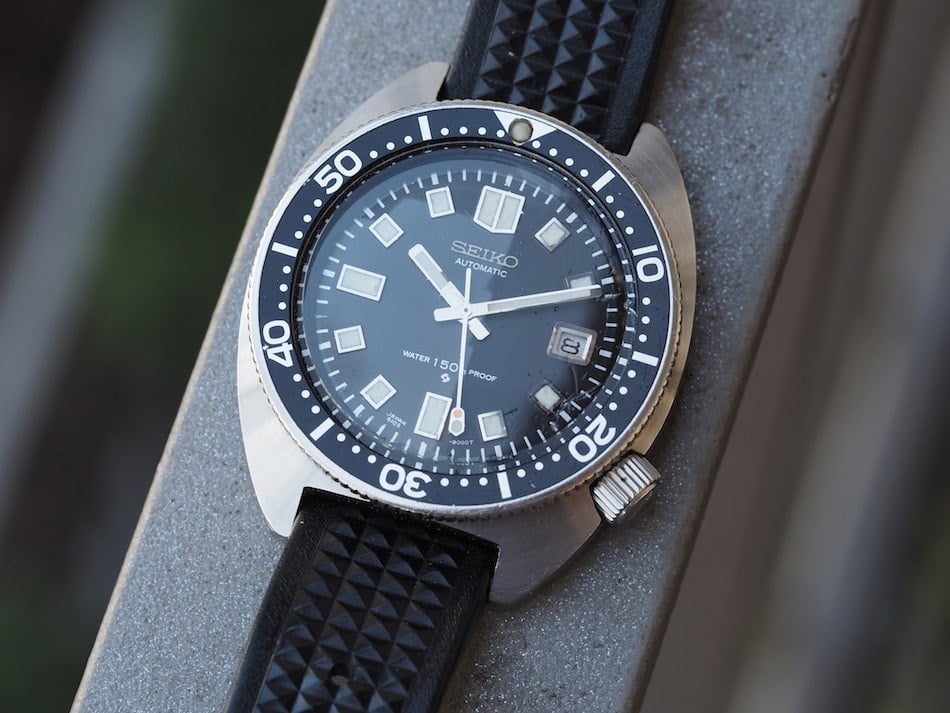
With the Seiko 6105-8000, you have the true successor to the 62MAS and a piece that set the design language for the brand’s forthcoming recreational dive watches. Plus, it’s a great wear and, as mentioned, not the easiest find. For whatever reason – let’s call it a general wake up call – Seiko is red hot right now with many dedicated collectors of Swiss-only timepieces finally turning their attention towards the Japanese brand. If you haven’t started looking, the 6105-8000 is a worthy one to consider adding now before they become even dearer.















